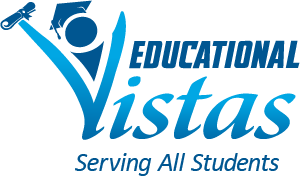Keeping Curriculum Development
in the Simplicity Domain
Actively Building a Curriculum in Real Time
To engage in curriculum and implementation in a simple, real-time manner is the surest way to have a curriculum in use and in continual modification. This is a major role for principals working with staff to build a curriculum that delivers equity and excellence. It starts with a commitment to create a local curriculum emanating from current and best of practice.
Getting staff on board requires clarity regarding what needs to be done. Simply stated, the goal is to build a curriculum that is common to ensure equity. This is the most effective way to inform teachers working with special needs students of what is being taught in each subject and grade. Begin with bread-and-butter courses at the elementary and middle school levels: English/Reading and Mathematics. At the secondary level address each subject area.
Active Building of a Curriculum
- Each teacher for each subject for each grade lays out a sequenced listing of what is being taught. In generating the listing, associate each chunk of instruction with a topic that represents what is being learned. If not already existing, this chunking is in reality displaying instructional units. Now relate an approximate timeline to each unit. Most effective unit instructions run from two to four weeks to allow for appropriate closure. With your unit and timeline for instruction, write a brief description of what is happening from a student’s perspective.
- Working in grade/subject teams, the principal sets up a sharing and review session(s) to achieve a common curricula structure. The key is to get teachers to agree on a basic curriculum of common instruction without inhibiting teacher creativity. There is much to gain when the principal and teachers are aware of what their peers of teaching and when. This is not only true of a specific grade, but also knowing what was taught at a previous grade and what is to be taught in a subsequent grade.
- From an agreed-upon common curriculum with a basic description of learning identify the primary content used at each grade/subject.
- Learning is doing, and, therefore, content and State learning standards provide the basis for student performance. The nature of the content learned is the foundation for drafting student performances with particular emphasis on what may be construed as super standards. Each unit should bear significant performances that require reasoning and explanation in both short and extended formats.
- Create common unit assessments that are administered at common times. This may be in a CBT format with immediate feedback through a system like EdVistas’ DataMate. Data-based decision making will help in informing curricular and instructional modification.
The process of actively building a curriculum actually takes on its own manner of operation once initiated. Once engaged, principal and teachers are working a system they control.
 Dr. Bruce H. Crowder is a senior researcher for Educational Vistas, Inc. His work is primarily focused on creating pathways for deeper learning for all students through student performance and a dynamic curriculum replete with strategic teaching. Dr. Crowder may be reached at bcrowder@edvistas.com
Dr. Bruce H. Crowder is a senior researcher for Educational Vistas, Inc. His work is primarily focused on creating pathways for deeper learning for all students through student performance and a dynamic curriculum replete with strategic teaching. Dr. Crowder may be reached at bcrowder@edvistas.com


